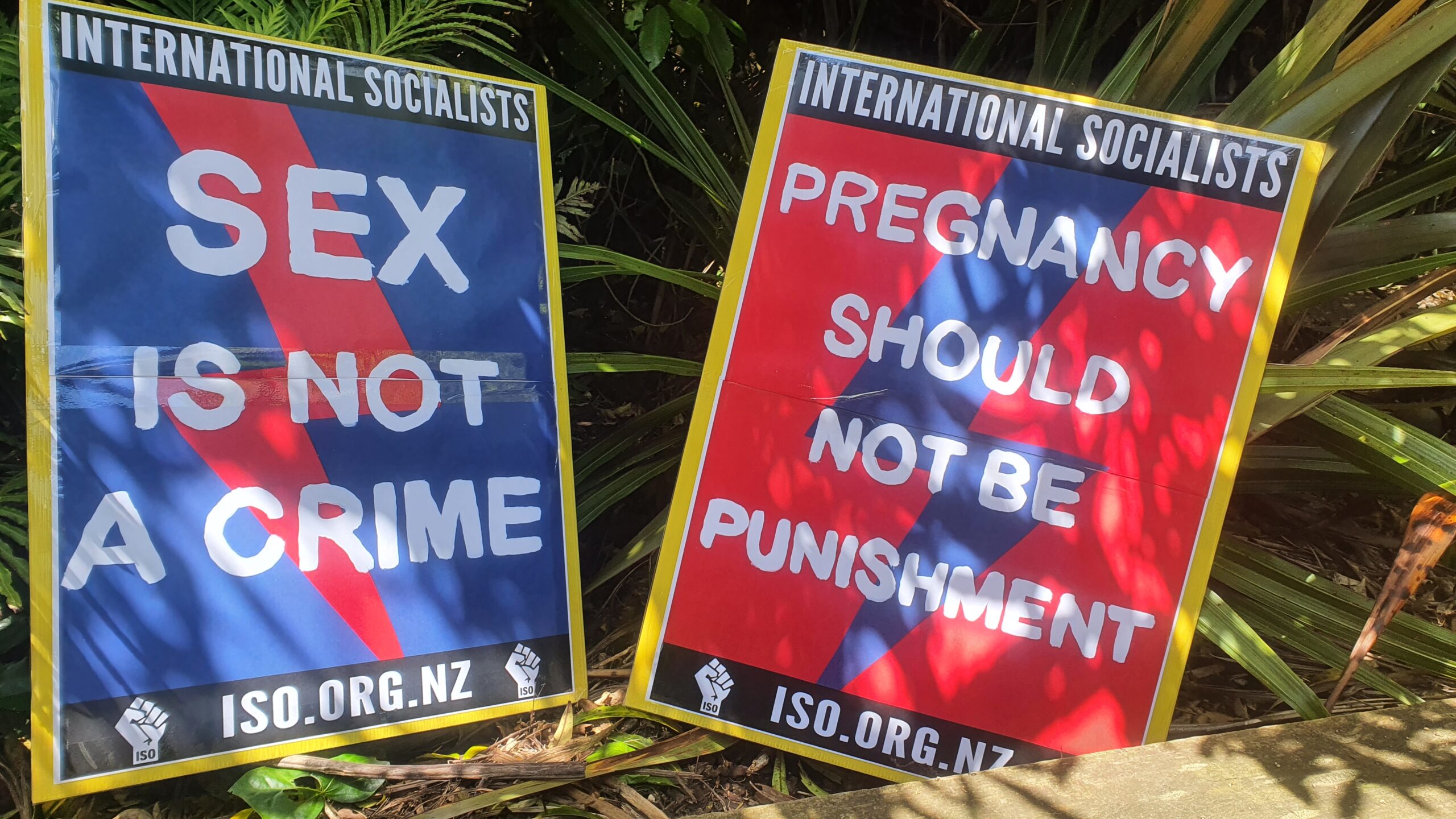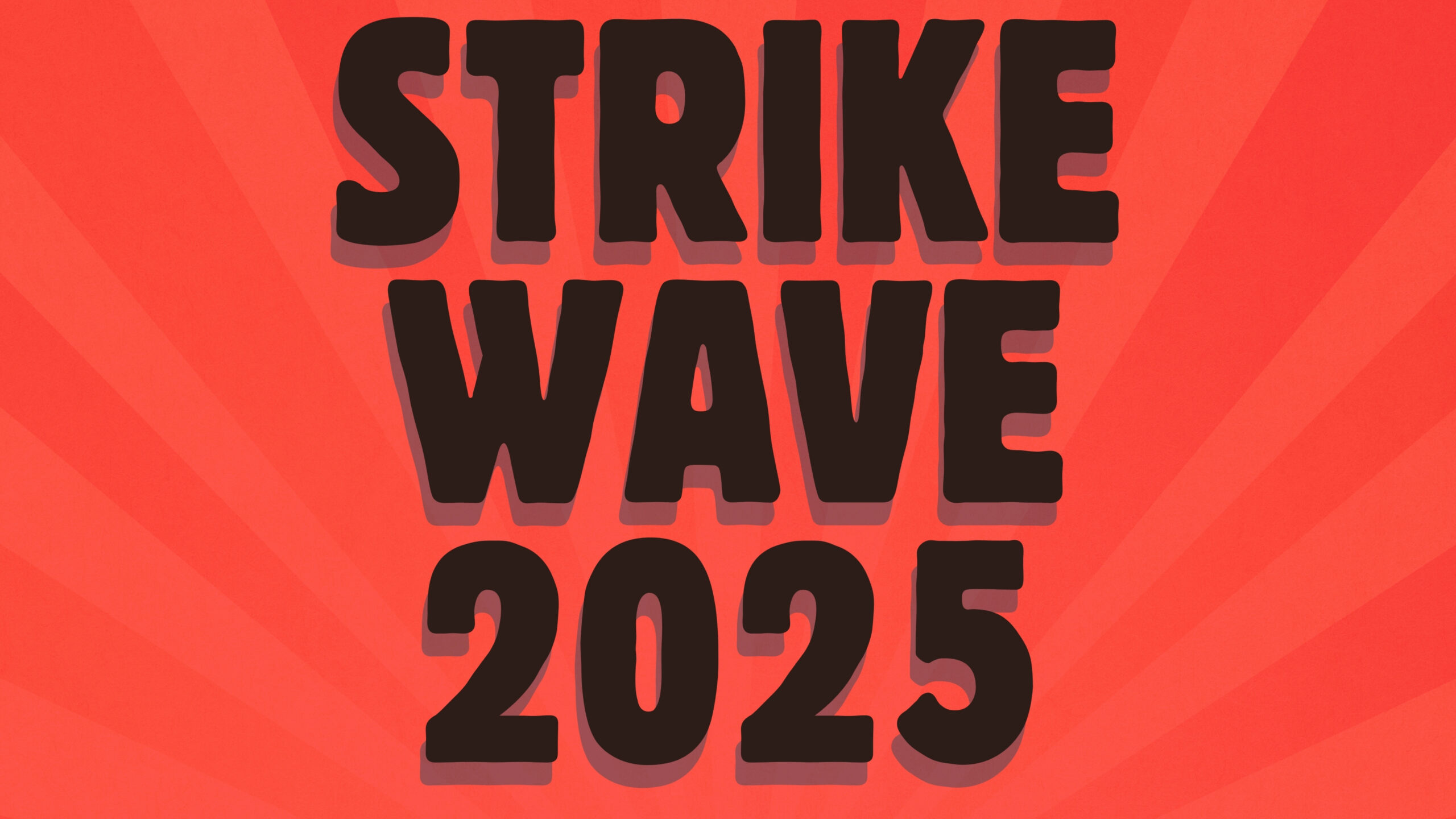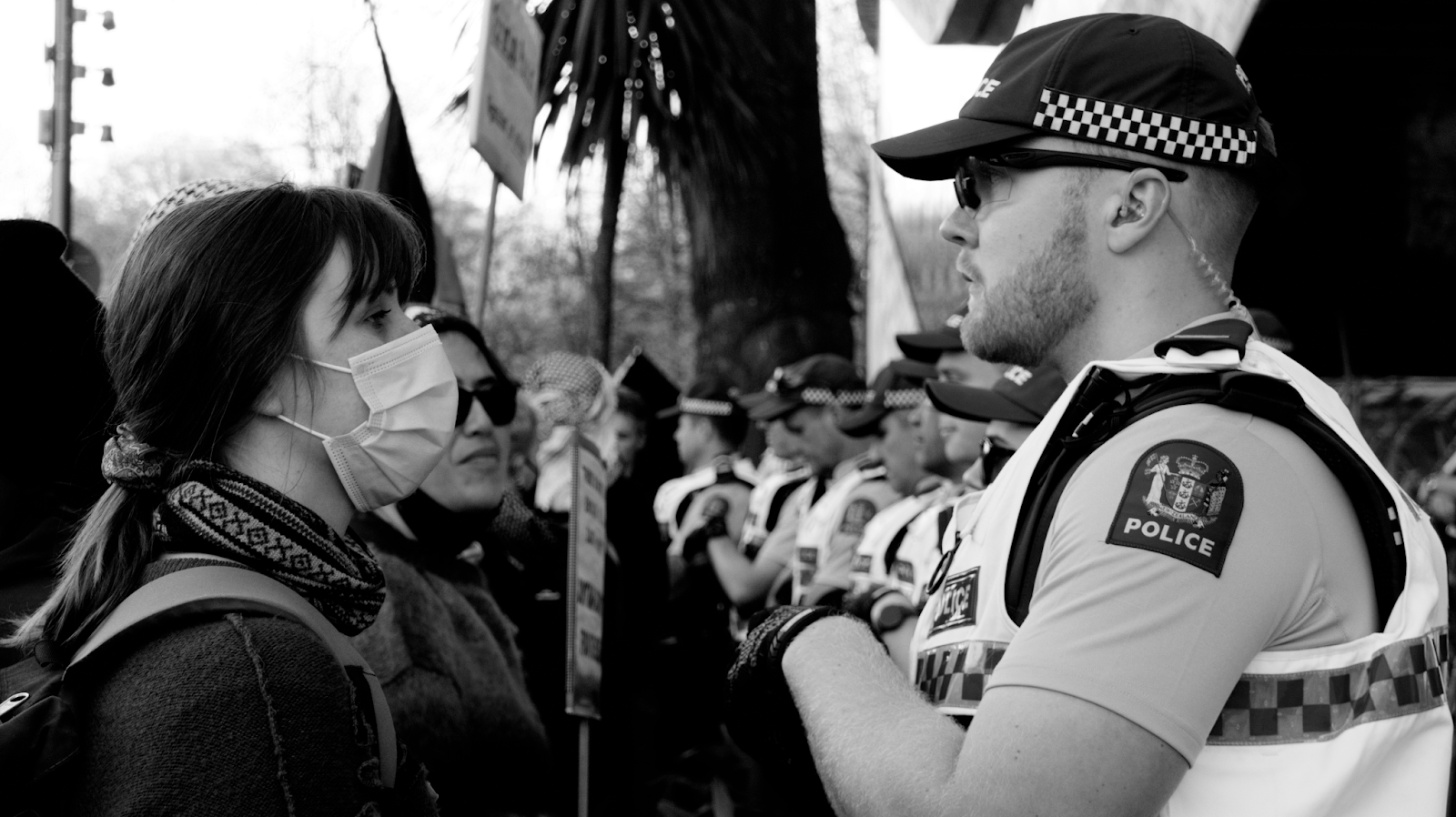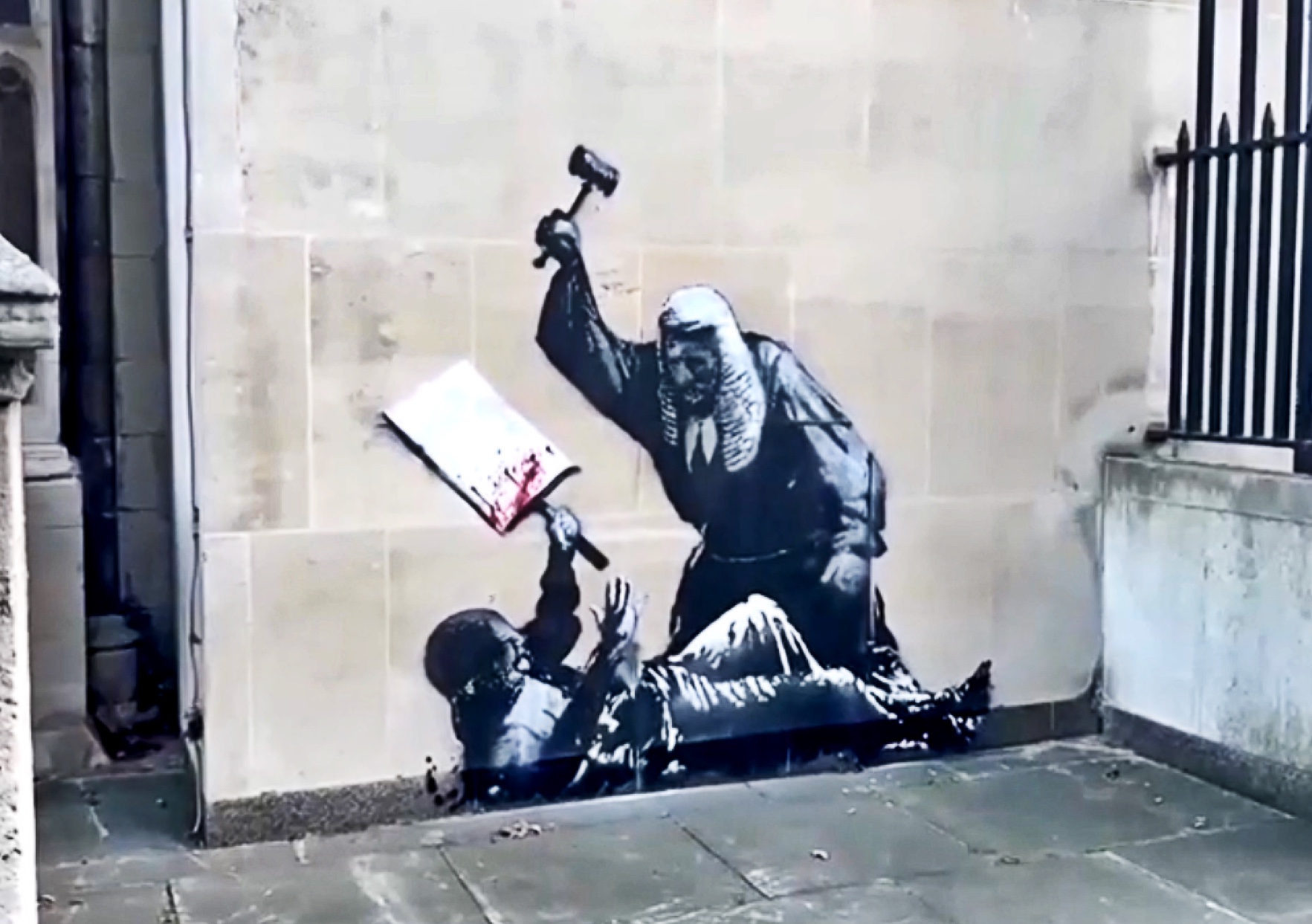The Hīkoi mō te Tiriti was not just a mass gathering of people, it was an act of defiance, unity, and hope. Māori, pākehā, tauiwi, all heeded the call of the organisers of Toitū te Tiriti, and came out in our tens of thousands. And while the formal call from the organisers was to rally around Te Tiriti, these mass events can give confidence to all those there to bring out more than just the single issue and take up questions of cuts and attacks that people are facing more broadly.
There were iwi from up and down the motu, nurses in uniform, teachers and students, people there with their gang insignia, and countless flags for tino rangatiratanga (Māori sovereignty), Te Whakaputanga, and Palestine. Events, like the hīkoi, are essential in the struggle for justice and equality. They bring people together to challenge oppressive systems, inspire collective action, and build the power needed to create real change. The creativity and power these mass events embody can be the foundations for mass social change.
Mass Demonstrations Do Work
History shows us that mass demonstrations can shift the course of events. Eru Kapa Kingi, one of the lead organisers of Toitū te Tiriti, addressed tens of thousands of participants at the hīkoi, urging them to stand strong. In his kōrero, he talked about the mana and power of those who had gathered together for the hīkoi. Such events are not symbolic gestures; they are transformative acts of resistance.
Standing together in protest transforms individuals. In our daily lives, we often feel powerless against massive systems of inequality. But in a protest, that powerlessness disappears. The collective act of marching, chanting, and occupying public spaces builds confidence and a sense of strength.
This isn’t just theoretical—it’s the reality behind every successful movement for change. From fighting apartheid to ending wars, collective action has won radical reforms and even toppled oppressive regimes. Protests are not just a tactic to pressure politicians; they are the foundation of every push for fundamental change.
Political Contempt from ruling Coalition
That’s why it was critical for the hīkoi to happen. Some politicians, like those in the National Party, were quick to dismiss the hīkoi outright. Prime Minister Christoper Luxon refused to meet the hīkoi, and reiterated that their party would not support the Bill after the second reading, insinuating that it was pointless for the hīkoi to be there. The size and breadth and power of the hīkoi makes it harder for parties like National and Act to use division as a strategy to weaken movements. Tens of thousands on the hīkoi demonstrated solidarity with Māori, and that we would not be fooled by the classic divide and rule tactic of “Māori vs. non-Māori”.
ACT Party leader David Seymour posted a patronising video post as he ‘listened’ to the protestors, and expressed his disappointment that he was not allowed to speak to the hīkoi. Let’s be clear. As Te Pāti Māori co-leader Rawiri Waititi explained, David Seymour has been given national air time on radio, TV, and in the halls of parliament. It was right for the organisers not to invite Seymour to address a demonstration of opposition to his rubbish. Seymour is being completely disingenuous to frame this as a “discussion” around the same rights for all. In fact, he is merely continuing to uphold the interests of corporate wealth. Spinoff writer Rupert O’Brien wrote, “Act, and their benefactors, do understand Te Tiriti, they remember the effects that it has had in the past, and they know that it stands as a major obstacle in their goal of deregulation and promoting laissez-faire economics.”
What next?
Since the Hīkoi, Te Pāti Māori has reframed the discussion around the Treaty Principles Bill, and pointed out the corporate interests that Seymour is protecting through this Bill. Te Pāti Māori co-leader Debbie Ngarewa-Packer rightly points out that this Bill serves corporate interests and that Te Tiriti protects Aotearoa from corporate exploitation. She explained that, “We’re not given any extra rights to participate, but we are recognised because we are tangata whenua. We have those indigenous rights, and they are the last legal bastion that we have to protect all of Aotearoa from corporate exploitation.”
By this new reframing, Te Pāti Māori bypasses the Māori vs non-Māori divide that Seymour is so intent on stoking, and brings in an essential class element: This bill is about tangata whenua and tangata tiriti vs corporate profits. This echoes the anticapitalist slogan People, not Profits.
Te Pāti Māori MP Hana-Rawhiti Maipi-Clarke and Eru Kapa Kingi’s main message to hīkoi participants on the day was to get on the Māori roll. This way Māori can have increased representation within parliament as Māori. This is a long-term electoral strategy for Te Pāti Māori, and one that will only have an impact with the next 2028 census, in which the number of Māori seats will be reviewed. Currently, just over half of enrolled Māori voters are on the Māori roll, and this has already increased since the hīkoi. And while getting more Māori onto the Māori electoral roll is important, it won’t dismantle a system designed to serve capital over people.
For those who went on the hīkoi, writing to the select committee against the Treaty Principle Bill is the next step. While this won’t give the sense of transformative power that the hīkoi can generate, far from it, it can, nevertheless, be a demonstration to the likes of the ruling Coalition that we will not take it lying down. A significant number of submissions against this Bill would also serve as a shot across NZ First’s bows, who also want to review, replace and repeal mentions of the Treaty in legislation.
These kinds of submissions can be made all the more powerful with organisations like unions taking part and making collective submissions. In my union, the Wellington region will be making a collective submission against the Treaty Principles Bill.
Why do socialists go on about workers?
While demonstrations like the hīkoi are vital, history teaches us that workers’ strikes are the most powerful form of protest. Trade unions, when mobilised, challenge the very foundations of capitalism by disrupting profit-making. A strike doesn’t just symbolise power—it embodies it.
However, decades of attacks on workers and unions have weakened their influence. And obviously, simply making a collective submission against the Treaty Principles Bill is far from the be all and end all. By raising this collectively, however, it teaches workers to think as a collective, and it brings the debate of Te Tiriti to its grassroots, rather than simply being something that is discussed and decided by the powers that be. We know from history that workers can and do rise to the challenge of standing up for justice, especially when inspired by movements that support every oppressed group and stand against corporate greed.
Uniting Protests and Worker Power
The key to real change lies in linking the energy of mass protests like the hīkoi with the strength of workers’ movements. A radical, militant movement—one that fights for tino rangatiratanga Māori sovereignty, democratic rights, and economic justice—can inspire workers to take bold action. Together, these forces have the potential to reshape society.
Mass demonstrations are not just good—they are essential. They empower us to challenge inequality, reject division, and build the collective strength needed for a better future. Every hīkoi we take together is a step closer to justice.
Photo Credit: Inati Aotearoa









